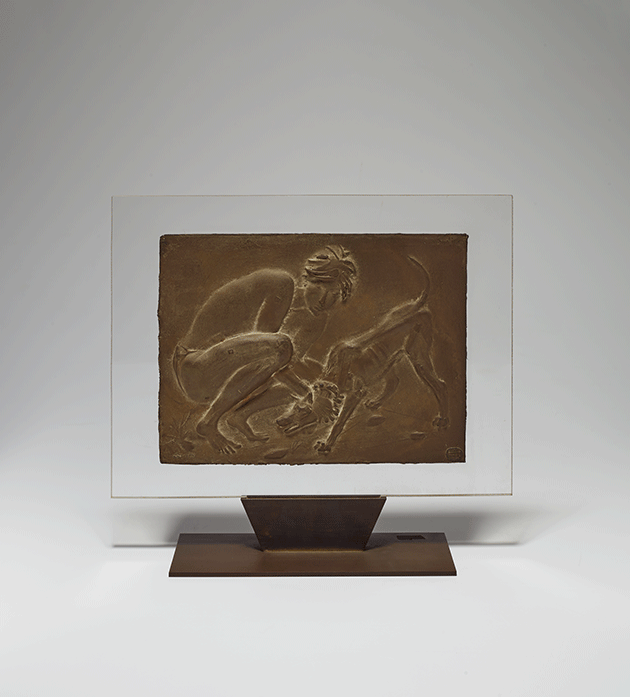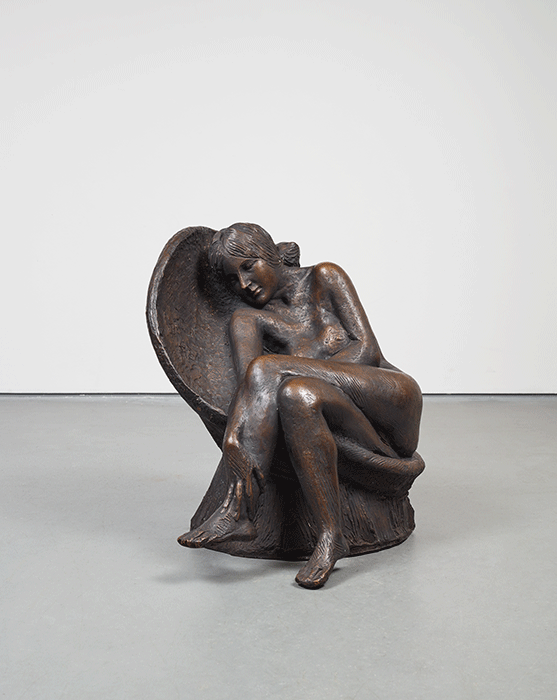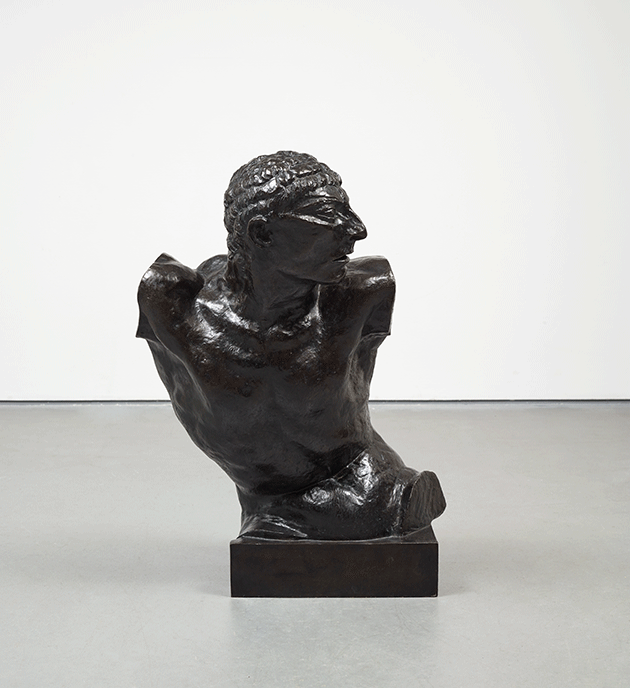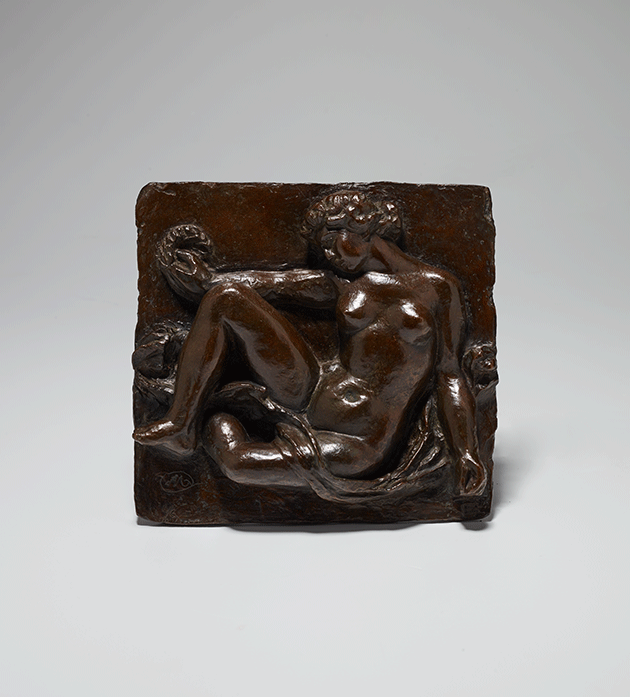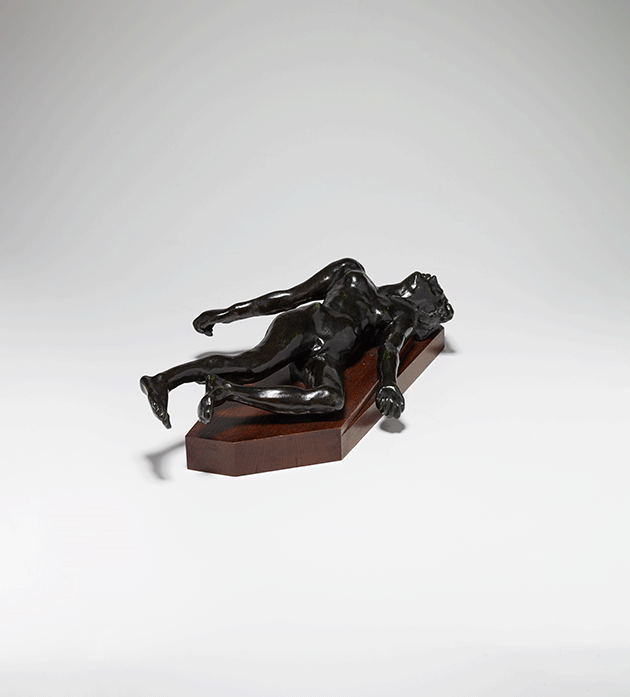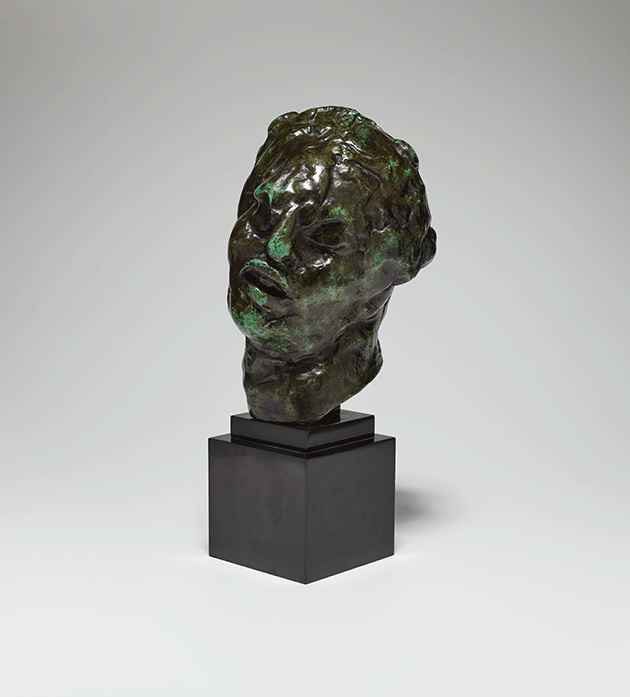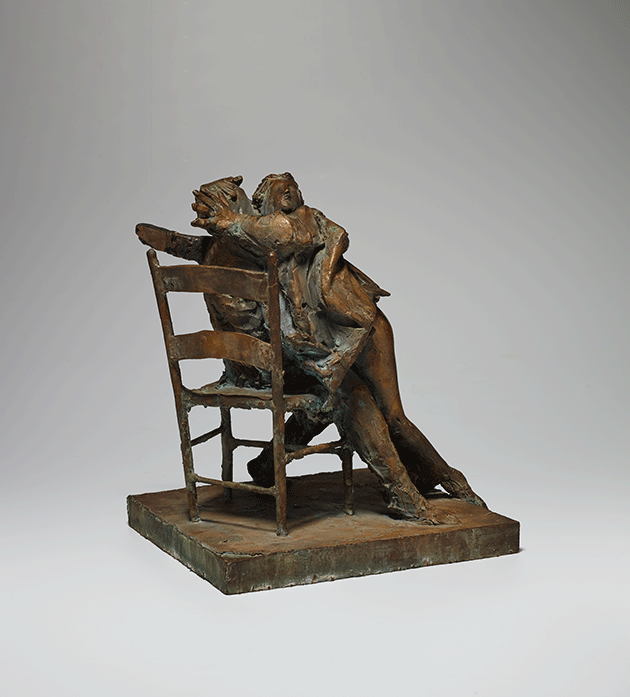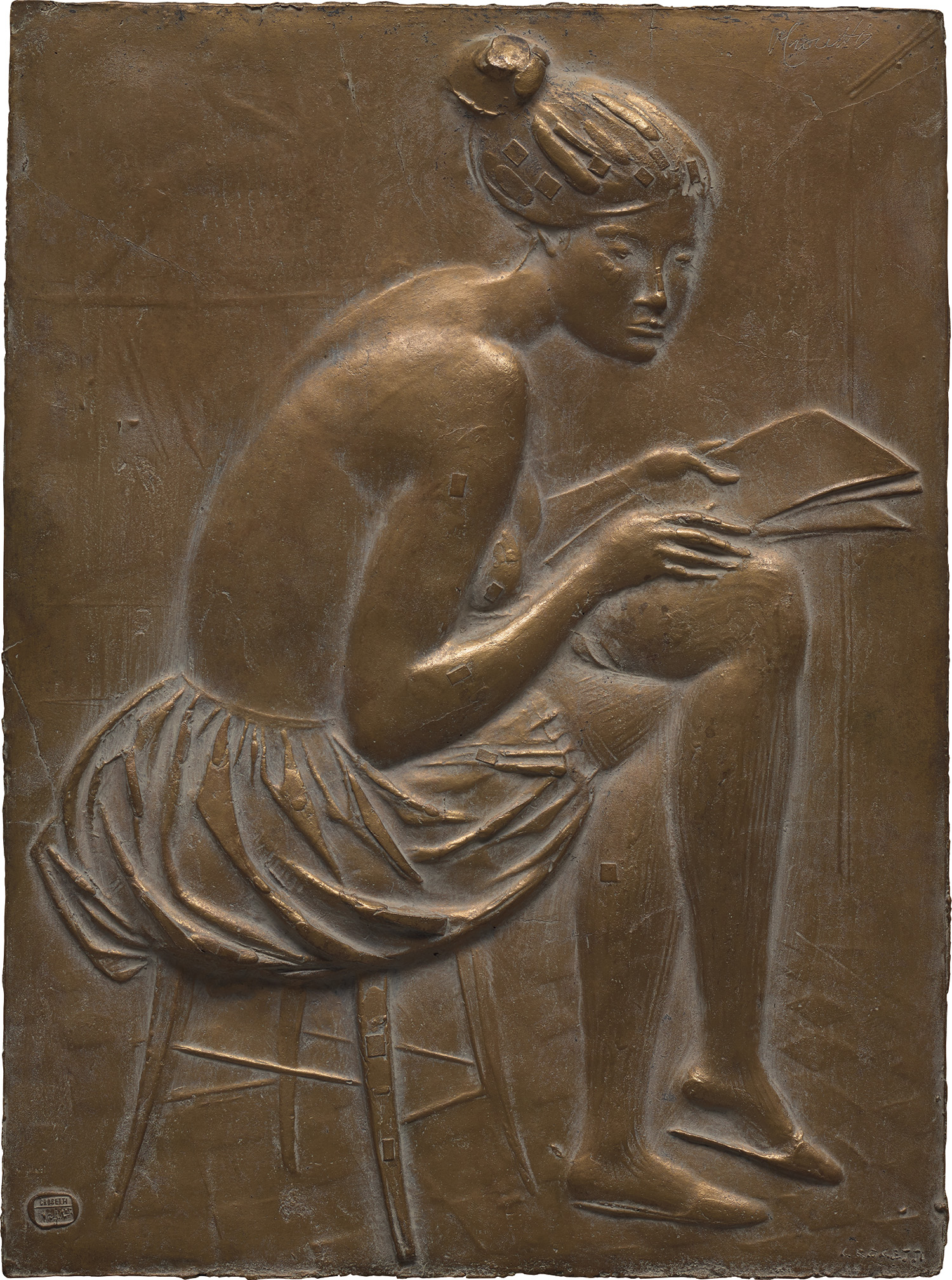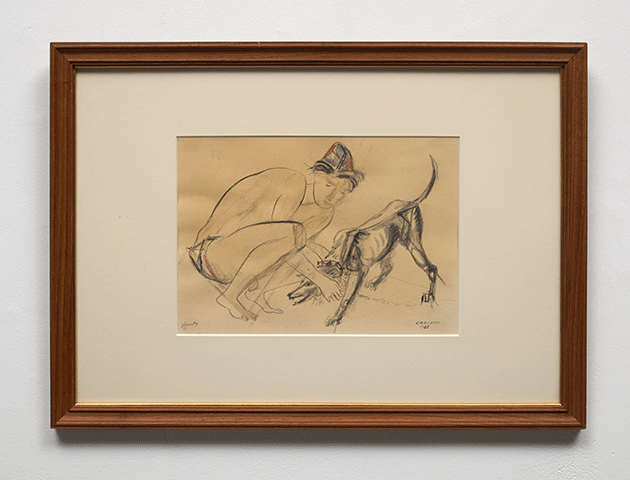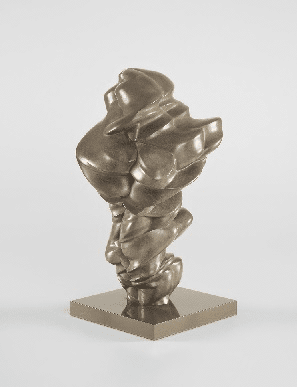20th Century & Contemporary Art Day Sale
London Auction 16 April 2021
201
Salman Toor
Dancing to Whitney
Estimate £40,000 - 60,000 ‡
Sold for £252,000
Create your first list.
Select an existing list or create a new list to share and manage lots you follow.
202
Alex Gardner
Triangle #2
Estimate £30,000 - 50,000 ‡
Sold for £138,600
Create your first list.
Select an existing list or create a new list to share and manage lots you follow.
203
Issy Wood
You know you bathe me way more than you should
Estimate £15,000 - 20,000 ♠
Sold for £32,760
Create your first list.
Select an existing list or create a new list to share and manage lots you follow.
204
Cindy Ji Hye Kim
Whispers
Estimate £10,000 - 15,000 ‡
Sold for £25,200
Create your first list.
Select an existing list or create a new list to share and manage lots you follow.
205
Ivy Haldeman
Side Touch
Estimate £5,000 - 7,000 ‡
Sold for £56,700
Create your first list.
Select an existing list or create a new list to share and manage lots you follow.
206
This lot is no longer available.
207
Claire Tabouret
The Soccer Team
Estimate £100,000 - 150,000 ‡♠
Sold for £478,800
Create your first list.
Select an existing list or create a new list to share and manage lots you follow.
208
Stanley Whitney
Stay Song 19
Estimate £50,000 - 70,000 ‡
Sold for £93,240
Create your first list.
Select an existing list or create a new list to share and manage lots you follow.
209
Ebony G. Patterson
Untitled (from the Gangstas for Life series)
Estimate £10,000 - 15,000 ‡
Sold for £27,720
Create your first list.
Select an existing list or create a new list to share and manage lots you follow.
210
Eddy Kamuanga Ilunga
Fragile
Estimate £35,000 - 55,000
Sold for £119,700
Create your first list.
Select an existing list or create a new list to share and manage lots you follow.
211
Derrick Adams
Interior Life (Figure 13)
Estimate £6,000 - 8,000
Sold for £25,200
Create your first list.
Select an existing list or create a new list to share and manage lots you follow.
212
Eddie Martinez
Mandala #7 (Frankenthaler Wash)
Estimate £200,000 - 300,000
Sold for £201,600
Create your first list.
Select an existing list or create a new list to share and manage lots you follow.
213
Cy Gavin
Portrait: Hunger
Estimate £30,000 - 50,000 ‡
Sold for £40,320
Create your first list.
Select an existing list or create a new list to share and manage lots you follow.
214
SoiL Thornton
So Warm Out, That's A Lot Of Sea Weed Chips
Estimate £20,000 - 30,000 ‡
Sold for £22,680
Create your first list.
Select an existing list or create a new list to share and manage lots you follow.
215
Oscar Murillo
Untitled (Drawings off the wall)
Estimate £100,000 - 150,000 ‡♠
Sold for £151,200
Create your first list.
Select an existing list or create a new list to share and manage lots you follow.
216
Rose Wylie
Black Strap (Red Fly)
Estimate £60,000 - 80,000 ‡♠
Sold for £220,500
Create your first list.
Select an existing list or create a new list to share and manage lots you follow.
217
Niniko Morbedadze
The Fairy Tale
Estimate £8,000 - 12,000 ‡
Sold for £22,680
Create your first list.
Select an existing list or create a new list to share and manage lots you follow.
218
Jonas Burgert
Blattschlaf
Estimate £80,000 - 120,000 ‡♠
Sold for £65,520
Create your first list.
Select an existing list or create a new list to share and manage lots you follow.
219
Kenny Scharf
Tribolic
Estimate £30,000 - 40,000 ‡
Sold for £75,600
Create your first list.
Select an existing list or create a new list to share and manage lots you follow.
220
George Condo
Untitled
Estimate £30,000 - 50,000 ‡
Sold for £80,640
Create your first list.
Select an existing list or create a new list to share and manage lots you follow.
221
George Condo
Operatic Abstraction
Estimate £80,000 - 120,000 ‡
Sold for £94,500
Create your first list.
Select an existing list or create a new list to share and manage lots you follow.
222
This lot is no longer available.
223
Banksy
Girl with Balloon
Estimate £120,000 - 180,000 ♠
Sold for £132,300
Create your first list.
Select an existing list or create a new list to share and manage lots you follow.
224
Banksy
Bird with Grenade
Estimate £50,000 - 70,000 ♠
Sold for £327,600
Create your first list.
Select an existing list or create a new list to share and manage lots you follow.
225
Banksy
Love is in the air
Estimate £300,000 - 500,000 ‡♠
Sold for £315,000
Create your first list.
Select an existing list or create a new list to share and manage lots you follow.
226
Harland Miller
Quarry Hill - Nowhere Nothing Fuck Up
Estimate £50,000 - 70,000 ♠
Sold for £75,600
Create your first list.
Select an existing list or create a new list to share and manage lots you follow.
227
Damien Hirst
Nessus
Estimate £100,000 - 150,000 ♠
Sold for £113,400
Create your first list.
Select an existing list or create a new list to share and manage lots you follow.
228
Sterling Ruby
SP151
Estimate £250,000 - 350,000 ‡
Sold for £390,600
Create your first list.
Select an existing list or create a new list to share and manage lots you follow.
229
Francesco Clemente
Terry Winters
Estimate £50,000 - 70,000 ‡♠
Create your first list.
Select an existing list or create a new list to share and manage lots you follow.
230
Andy Warhol
Janet Sartin
Estimate £180,000 - 250,000 ‡
Sold for £226,800
Create your first list.
Select an existing list or create a new list to share and manage lots you follow.
231
Richard Pettibone
Andy Warhol, ‘Marilyn’
Estimate £10,000 - 15,000 ‡
Sold for £21,420
Create your first list.
Select an existing list or create a new list to share and manage lots you follow.
232
Richard Pettibone
Andy Warhol, ‘Flowers'
Estimate £6,000 - 8,000 ‡
Sold for £31,500
Create your first list.
Select an existing list or create a new list to share and manage lots you follow.
233
Andy Warhol
Campbell's Soup Box: Noodle Soup
Estimate £100,000 - 150,000 ‡
Sold for £126,000
Create your first list.
Select an existing list or create a new list to share and manage lots you follow.
234
Andy Warhol
Campbell's Soup Box: Chicken Rice
Estimate £100,000 - 150,000 ‡
Sold for £126,000
Create your first list.
Select an existing list or create a new list to share and manage lots you follow.
235
John Chamberlain
Mezzomangle
Estimate £200,000 - 300,000 ‡
Create your first list.
Select an existing list or create a new list to share and manage lots you follow.
236
Frank Stella
Konelly
Estimate £100,000 - 150,000 ‡
Sold for £119,700
Create your first list.
Select an existing list or create a new list to share and manage lots you follow.
237
Alexander Calder
Untitled
Estimate £150,000 - 200,000 ‡
Sold for £201,600
Create your first list.
Select an existing list or create a new list to share and manage lots you follow.
238
Alexander Calder
Dialogue marin
Estimate £40,000 - 60,000 ‡
Sold for £88,200
Create your first list.
Select an existing list or create a new list to share and manage lots you follow.
239
Alexander Calder
Untitled
Estimate £40,000 - 60,000 ‡
Sold for £126,000
Create your first list.
Select an existing list or create a new list to share and manage lots you follow.
240
Pablo Picasso
Le Peintre
Estimate £180,000 - 250,000 ‡♠
Sold for £201,600
Create your first list.
Select an existing list or create a new list to share and manage lots you follow.
241
Giorgio de Chirico
Dioscuri
Estimate £100,000 - 150,000 ‡♠
Sold for £138,600
Create your first list.
Select an existing list or create a new list to share and manage lots you follow.
242
Philip Guston
22 February
Estimate £40,000 - 60,000 ‡
Create your first list.
Select an existing list or create a new list to share and manage lots you follow.
243
Bernard Boutet de Monvel
Femme de profil au chapeau noir
Estimate £12,000 - 18,000 ‡
Sold for £7,560
Create your first list.
Select an existing list or create a new list to share and manage lots you follow.
244
Victor Vasarely
Autoportrait
Estimate £180,000 - 250,000 ‡♠
Sold for £296,100
Create your first list.
Select an existing list or create a new list to share and manage lots you follow.
245
Victor Vasarely
Zet-Ton
Estimate £70,000 - 90,000 ♠
Sold for £119,700
Create your first list.
Select an existing list or create a new list to share and manage lots you follow.
246
Victor Vasarely
Tenger
Estimate £80,000 - 120,000 ‡♠
Sold for £88,200
Create your first list.
Select an existing list or create a new list to share and manage lots you follow.
247
Eduardo Terrazas
Possibilities of a Structure: Cosmos 1.1.130
Estimate £25,000 - 35,000
Create your first list.
Select an existing list or create a new list to share and manage lots you follow.
248
Pierre Soulages
Brou de noix sur papier 75, 2 X 108 cm, 2004
Estimate £150,000 - 200,000 ‡♠
Sold for £239,400
Create your first list.
Select an existing list or create a new list to share and manage lots you follow.
249
Markus Lüpertz
Otello - Selbdritt 2.
Estimate £25,000 - 35,000 ‡♠
Sold for £94,500
Create your first list.
Select an existing list or create a new list to share and manage lots you follow.
250
Thomas Schütte
Ohne Titel
Estimate £120,000 - 180,000 ‡♠
Create your first list.
Select an existing list or create a new list to share and manage lots you follow.
251
Georg Baselitz
Untitled
Estimate £15,000 - 20,000 ‡♠
Sold for £18,900
Create your first list.
Select an existing list or create a new list to share and manage lots you follow.
252
Sigmar Polke
Untitled
Estimate £100,000 - 150,000 ♠
Create your first list.
Select an existing list or create a new list to share and manage lots you follow.
253
Anselm Kiefer
Rapunzel
Estimate £40,000 - 60,000 ♠
Sold for £44,100
Create your first list.
Select an existing list or create a new list to share and manage lots you follow.
254
Georg Baselitz
Trauerseeschwalbe
Estimate £15,000 - 20,000 ‡♠
Sold for £16,380
Create your first list.
Select an existing list or create a new list to share and manage lots you follow.
255
Peter Dreher
Seascape #11
Estimate £10,000 - 15,000 ‡♠
Sold for £12,600
Create your first list.
Select an existing list or create a new list to share and manage lots you follow.
256
Peter Dreher
Two works: (i) Tag um Tag guter Tag (Day by Day good Day) Nr. 2243 (Night); (ii) Tag um Tag guter Tag (Day by Day good Day) Nr. 2291 (Night)
Estimate £15,000 - 20,000 ‡♠
Sold for £23,940
Create your first list.
Select an existing list or create a new list to share and manage lots you follow.
257
Günther Uecker
Splitter
Estimate £30,000 - 40,000 ‡♠
Create your first list.
Select an existing list or create a new list to share and manage lots you follow.
258
Günther Uecker
„Man muss noch Chaos in sich haben, um einen tanzenden Stern gebären zu können“ (Friedrich Nietzsche) - X
Estimate £25,000 - 35,000 ‡♠
Create your first list.
Select an existing list or create a new list to share and manage lots you follow.
259
Franz West
o.T. (Liege)
Estimate £60,000 - 80,000 ‡♠
Create your first list.
Select an existing list or create a new list to share and manage lots you follow.
260
William Turnbull
Paddle Venus 5
Estimate £60,000 - 80,000 ♠
Sold for £113,400
Create your first list.
Select an existing list or create a new list to share and manage lots you follow.
261
Antoine Bourdelle
Héraklès archer, buste
Estimate £30,000 - 40,000 Ω
Sold for £35,280
Create your first list.
Select an existing list or create a new list to share and manage lots you follow.
262No Reserve
Aristide Maillol
Relief, La Victoire
Estimate £10,000 - 15,000 •‡
Sold for £7,560
Create your first list.
Select an existing list or create a new list to share and manage lots you follow.
263No Reserve
Auguste Rodin
Martyre (petit modèle)
Estimate £22,000 - 28,000 Ω•
Sold for £8,190
Create your first list.
Select an existing list or create a new list to share and manage lots you follow.
264
Auguste Rodin
Tête de la Muse tragique
Estimate £7,000 - 10,000 Ω
Sold for £10,710
Create your first list.
Select an existing list or create a new list to share and manage lots you follow.
265
Emilio Greco
Figura Seduta No. 3
Estimate £6,000 - 8,000 ‡♠
Sold for £7,560
Create your first list.
Select an existing list or create a new list to share and manage lots you follow.
266
Giacomo Manzù
Amanti
Estimate £6,000 - 8,000 ‡♠
Sold for £8,190
Create your first list.
Select an existing list or create a new list to share and manage lots you follow.
267No Reserve
Venanzo Crocetti
Ragazza che legge
Estimate £1,500 - 2,000 •‡♠
Sold for £945
Create your first list.
Select an existing list or create a new list to share and manage lots you follow.
268No Reserve
Venanzo Crocetti
Two works: (i) Giovane con cane; (ii) Study for Giovane con cane
Estimate £1,000 - 1,500 •‡♠
Sold for £756
Create your first list.
Select an existing list or create a new list to share and manage lots you follow.
269
Ron Arad
Tondo 2020
Estimate £60,000 - 80,000 ♠
Sold for £138,600
Create your first list.
Select an existing list or create a new list to share and manage lots you follow.
270
Ron Arad
Tondino
Estimate £20,000 - 30,000 ♠
Sold for £37,800
Create your first list.
Select an existing list or create a new list to share and manage lots you follow.
271
Daniel Buren
Die Farbe gesetzt/ersetzt - B 2 Gelb
Estimate On Request
Sold for £25,200
Create your first list.
Select an existing list or create a new list to share and manage lots you follow.
272
Michelangelo Pistoletto
Scaffali – Vasi Cinesi
Estimate £100,000 - 150,000 ‡♠
Create your first list.
Select an existing list or create a new list to share and manage lots you follow.
273
Marino Marini
Cavallo e cavaliere
Estimate £18,000 - 25,000 ‡♠
Sold for £15,120
Create your first list.
Select an existing list or create a new list to share and manage lots you follow.
274
Marino Marini
Giocoliere
Estimate £10,000 - 15,000 ‡♠
Sold for £12,600
Create your first list.
Select an existing list or create a new list to share and manage lots you follow.
275
Alighiero Boetti
Andare a caccia da solo
Estimate £10,000 - 15,000 ♠
Sold for £11,340
Create your first list.
Select an existing list or create a new list to share and manage lots you follow.
276
Alighiero Boetti
Senza titolo (Mettere i verbi all’infinito)
Estimate £10,000 - 15,000 ♠
Sold for £10,080
Create your first list.
Select an existing list or create a new list to share and manage lots you follow.
277
Jannis Kounellis
Untitled
Estimate £70,000 - 90,000 ‡♠
Sold for £100,800
Create your first list.
Select an existing list or create a new list to share and manage lots you follow.
278
Mario Merz
Leggere nelle nuvole
Estimate £10,000 - 15,000 ‡♠
Sold for £12,600
Create your first list.
Select an existing list or create a new list to share and manage lots you follow.
279
Giosetta Fioroni
Mi si è sfilata una scarpa
Estimate £8,000 - 12,000 ♠
Sold for £8,820
Create your first list.
Select an existing list or create a new list to share and manage lots you follow.
280
Antonio Calderara
Orizzonte Pluricromatico al Margine
Estimate £50,000 - 70,000
Sold for £37,800
Create your first list.
Select an existing list or create a new list to share and manage lots you follow.
281
Bram Bogart
En cage
Estimate £15,000 - 20,000 ‡♠
Sold for £22,680
Create your first list.
Select an existing list or create a new list to share and manage lots you follow.
282
Raoul De Keyser
Vóór het vlakke groen
Estimate £50,000 - 70,000 ‡♠
Sold for £113,400
Create your first list.
Select an existing list or create a new list to share and manage lots you follow.
283
Jan Fabre
Walking Leaf ? (From series: Walking Leaves 1986-1993)
Estimate £25,000 - 35,000 ‡♠
Sold for £25,200
Create your first list.
Select an existing list or create a new list to share and manage lots you follow.
284
Art & Language
Portrait of President Barack Obama in the Style of Jackson Pollock
Estimate £15,000 - 20,000 ‡♠
Sold for £11,340
Create your first list.
Select an existing list or create a new list to share and manage lots you follow.
285
Olivier Mosset
Untitled
Estimate £40,000 - 60,000 ‡
Create your first list.
Select an existing list or create a new list to share and manage lots you follow.
286
Allan McCollum
Perfect Vehicle
Estimate £20,000 - 30,000 ‡
Sold for £47,880
Create your first list.
Select an existing list or create a new list to share and manage lots you follow.
287
Leandro Erlich
Cadres Dores
Estimate £15,000 - 20,000 ‡
Sold for £18,900
Create your first list.
Select an existing list or create a new list to share and manage lots you follow.
288
Cildo Meireles
Prototype for "Descala"
Estimate £50,000 - 70,000 ‡
Create your first list.
Select an existing list or create a new list to share and manage lots you follow.
289
Christo
Wrapped Trees (Project for Avenue des Champs-Elysées)
Estimate £30,000 - 50,000 ‡♠
Sold for £90,720
Create your first list.
Select an existing list or create a new list to share and manage lots you follow.
290
Christo
Wrapped Monument to Christobal Colon (Project for Barcelona - Plaça Porta de la Pau)
Estimate £40,000 - 60,000 ‡♠
Sold for £56,700
Create your first list.
Select an existing list or create a new list to share and manage lots you follow.
291
Victor Man
Untitled
Estimate £25,000 - 35,000 ‡♠
Create your first list.
Select an existing list or create a new list to share and manage lots you follow.
292
Adrian Ghenie
Study for Nougat 5
Estimate £15,000 - 20,000 ‡♠
Sold for £37,800
Create your first list.
Select an existing list or create a new list to share and manage lots you follow.
293
Cindy Sherman
Untitled film still #38
Estimate £50,000 - 70,000 ‡
Create your first list.
Select an existing list or create a new list to share and manage lots you follow.
294
Marina Abramović and Ulay
Mickey Mouse
Estimate £20,000 - 30,000 ♠
Sold for £44,100
Create your first list.
Select an existing list or create a new list to share and manage lots you follow.
295
Thomas Struth
Museo del Prado 3, Madrid 2005
Estimate £50,000 - 70,000 ‡♠
Sold for £56,700
Create your first list.
Select an existing list or create a new list to share and manage lots you follow.
296
Gerhard Richter
Domecke I
Estimate £10,000 - 15,000 ‡♠
Sold for £12,600
Create your first list.
Select an existing list or create a new list to share and manage lots you follow.
297
Wolfgang Tillmans
Lighter Drop
Estimate £25,000 - 35,000 ‡♠
Sold for £20,160
Create your first list.
Select an existing list or create a new list to share and manage lots you follow.
298
Wolfgang Tillmans
Lighter 33
Estimate £20,000 - 30,000 ♠
Sold for £27,720
Create your first list.
Select an existing list or create a new list to share and manage lots you follow.
299
Douglas Gordon
Self Portrait of You + Me (Sofia Loren)
Estimate £40,000 - 60,000 ♠
Sold for £44,100
Create your first list.
Select an existing list or create a new list to share and manage lots you follow.
300
William Kentridge
Porter Series - Carte l'Europe (Shower Woman)
Estimate £70,000 - 90,000 ‡♠
Sold for £100,800
Create your first list.
Select an existing list or create a new list to share and manage lots you follow.
301
William Kentridge
Drawing from Sobriety, Obesity and Growing Old (Soho's Headquarters)
Estimate £50,000 - 70,000 ♠
Create your first list.
Select an existing list or create a new list to share and manage lots you follow.
302
Andy Warhol
Queen Elizabeth
Estimate £20,000 - 30,000
Sold for £88,200
Create your first list.
Select an existing list or create a new list to share and manage lots you follow.
303
Tony Lewis
Thep Poof
Estimate £7,000 - 9,000
Sold for £12,600
Create your first list.
Select an existing list or create a new list to share and manage lots you follow.
304
Robert Longo
Study for Silver Head
Estimate £30,000 - 40,000 ‡
Sold for £75,600
Create your first list.
Select an existing list or create a new list to share and manage lots you follow.
305
Robert Longo
Untitled (Andrew Young)
Estimate £30,000 - 50,000
Create your first list.
Select an existing list or create a new list to share and manage lots you follow.
306
Robert Longo
Study of Uzi
Estimate £15,000 - 25,000 ‡
Create your first list.
Select an existing list or create a new list to share and manage lots you follow.
307
Raymond Pettibon
No Title (We dogs are...)
Estimate £30,000 - 50,000
Sold for £30,240
Create your first list.
Select an existing list or create a new list to share and manage lots you follow.
308
Jeff Elrod
Untitled
Estimate £30,000 - 50,000 ‡
Sold for £25,200
Create your first list.
Select an existing list or create a new list to share and manage lots you follow.
309
Mark Flood
The Bacchae
Estimate £8,000 - 12,000
Create your first list.
Select an existing list or create a new list to share and manage lots you follow.
310
Angel Otero
Untitled SK-PY
Estimate £20,000 - 30,000 ‡
Sold for £27,720
Create your first list.
Select an existing list or create a new list to share and manage lots you follow.
311
Kojo Marfo
Noble Passage
Estimate £10,000 - 15,000 ♠
Sold for £35,280
Create your first list.
Select an existing list or create a new list to share and manage lots you follow.
312
Gary Hume
Red Tree
Estimate £15,000 - 20,000 ‡♠
Sold for £22,680
Create your first list.
Select an existing list or create a new list to share and manage lots you follow.
313
Anish Kapoor
Untitled
Estimate £30,000 - 50,000 ‡♠
Sold for £40,320
Create your first list.
Select an existing list or create a new list to share and manage lots you follow.
314
Marc Quinn
We Share the same Chemistry as the Stars AZ280
Estimate £100,000 - 150,000 ‡♠
Sold for £126,000
Create your first list.
Select an existing list or create a new list to share and manage lots you follow.
315
Tony Cragg
Loop
Estimate £60,000 - 80,000 ‡♠
Sold for £75,600
Create your first list.
Select an existing list or create a new list to share and manage lots you follow.
316
Michael Craig-Martin
All/Ball
Estimate £10,000 - 15,000 ♠
Sold for £10,710
Create your first list.
Select an existing list or create a new list to share and manage lots you follow.
317
Julian Opie
Youngkoe factory owner
Estimate £12,000 - 18,000 ‡♠
Create your first list.
Select an existing list or create a new list to share and manage lots you follow.
318
Jason Martin
Bronca
Estimate £30,000 - 50,000 ‡♠
Sold for £39,060
Create your first list.
Select an existing list or create a new list to share and manage lots you follow.
319
Mr Doodle
Untitled
Estimate £20,000 - 30,000 ♠
Sold for £30,240
Create your first list.
Select an existing list or create a new list to share and manage lots you follow.
320
Liza Lou
Chromium
Estimate £60,000 - 80,000 ‡
Sold for £63,000
Create your first list.
Select an existing list or create a new list to share and manage lots you follow.
321
Tom Burr
O’Hara Nude with Boots
Estimate £12,000 - 18,000 ‡
Sold for £15,120
Create your first list.
Select an existing list or create a new list to share and manage lots you follow.
322
Richard Aldrich
Untitled
Estimate £12,000 - 15,000 ‡
Sold for £22,680
Create your first list.
Select an existing list or create a new list to share and manage lots you follow.
323
Stanley Brouwn
Space-Fragment Architecture
Estimate £12,000 - 18,000 ‡♠
Sold for £18,900
Create your first list.
Select an existing list or create a new list to share and manage lots you follow.
324
Franz Ackermann
Rupalee: former cultural center
Estimate £25,000 - 35,000 ‡♠
Sold for £52,920
Create your first list.
Select an existing list or create a new list to share and manage lots you follow.
325
Gerhard Richter
Six works: (i) Cage 1; (ii) Cage 2; (iii) Cage 3; (iv) Cage 4; (v) Cage 5; (vi) Cage 6
Estimate £30,000 - 40,000 ♠
Sold for £176,400
Create your first list.
Select an existing list or create a new list to share and manage lots you follow.
326
Damien Hirst
Fire
Estimate £8,000 - 12,000 ♠
Sold for £21,420
Create your first list.
Select an existing list or create a new list to share and manage lots you follow.
327
Charming Baker
One Day Our Past Will Be All There Is To Look Forward To
Estimate £15,000 - 20,000 ♠
Sold for £12,600
Create your first list.
Select an existing list or create a new list to share and manage lots you follow.
